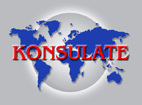|
Folgende Informationen stammen u.a. aus dem World Fact Book, daher sind die Inhalte zum Teil in englischer Sprache. Die Titelinformationen sind jedoch in Deutsch verfasst.
Zahlen und Fakten über Guinea Bissau - Informationen - Links zum Thema. Auf Konsulate.de verfügbare Informationen in alphabetischer Reihenfolge:
Arbeitskraefte
480,000 (1999)
Arbeitslosigkeit
NA%
Bevoelkerung Wachstumsrate
2.052% (2007 est.)
Bevoelkerung unterhalb der Armutsgrenze
NA%
Bewaessertes Land
250 sq km (2003)
Bruttoinlandsprodukt Reale Wachstumsrate
2.9% (2006 est.)
Bruttoinlandsprodukt
$1.244 billion (2006 est.)
Einwohner
1,472,780 (July 2007 est.)
Elektrizitaet - Export
0 kWh (2004)
Elektrizitaet - Import
0 kWh (2004)
Elektrizitaet - Produktion
58.02 million kWh (2004)
Elektrizitaet - Verbrauch
53.96 million kWh (2004)
Erdgas-Export
Erdgas-Import
Erdgas-Produktion
0 cu m (2004 est.)
Erdgas-Verbrauch
0 cu m (2004 est.)
Ethnische Gruppen
African 99% (includes Balanta 30%, Fula 20%, Manjaca 14%, Mandinga 13%, Papel 7%), European and mulatto less than 1%
Export Gebrauchsgueter
cashew nuts, shrimp, peanuts, palm kernels, sawn lumber
Export Partner
India 72%, Nigeria 17.1%, Ecuador 4% (2005)
Exportvolumen
$116 million f.o.b. (2004 est.)
Gas-Reserven, nachgewiesen
Geburten auf 1000 Einwohnern
36.81 births/1,000 population (2007 est.)
Geburten pro Frau, Anzahl
4.79 children born/woman (2007 est.)
Geographische Koordinaten
12 00 N, 15 00 W
Hauptstadt
Bissau
Im Gebrauch befindliche Telefon-Hauptanschluesse
10,600 (2003)
Import - Gebrauchsgueter
foodstuffs, machinery and transport equipment, petroleum products
Import Partner
Italy 24.8%, Senegal 18.2%, Portugal 15.4%, Cote d'Ivoire 4.2% (2005)
Importvolumen
$176 million f.o.b. (2004 est.)
Industrie Wachstumsrate
4.7% (2003 est.)
Industrien
agricultural products processing, beer, soft drinks
Inflationsrate Verbraucherpreise
4% (2002 est.)
Internationale Organisationen (Teilnehmer)
ACCT, ACP, AfDB, AU, ECOWAS, FAO, FZ, G-77, IBRD, ICAO, ICCt (signatory), ICRM, IDA, IDB, IFAD, IFC, IFRCS, ILO, IMF, IMO, Interpol, IOC, IOM, ISO (correspondent), ITU, ITUC, MIGA, NAM, OIC, OIF, OPCW (signatory), UN, UNCTAD, UNESCO, UNIDO, UNWTO, UPU, WADB (regional), WAEMU, WFTU, WHO, WIPO, WMO, WTO
Internet-Benutzer, Anzahl
26,000 (2005)
Internet-Laendercode
.gw
Konsulate und Botschaften
- Vertretungen in Deutschland, Deutsche Vertretungen in Guinea Bissau - Informationen auf Konsulate.de
Kuestenlaenge
350 km
Landwirtschaft Produkte
"rice, corn, beans, cassava (tapioca), cashew nuts, peanuts, palm kernels, cotton; timber; fish "
Mobiltelefone, Anzahl
67,000 (2005)
Nationalfeiertag
Independence Day, 24 September (1973)
Nationalflagge

Natuerliche Resourcen
fish, timber, phosphates, bauxite, clay, granite, limestone, unexploited deposits of petroleum
Netto-Migrations-Rate (Migranten auf 1000 Einwohner)
0 migrant(s)/1,000 population (2007 est.)
Oel-Export pro Tag
NA bbl/day
Oel-Import pro Tag
NA bbl/day
Oel-Produktion pro Tag
0 bbl/day (2004 est.)
Oel-Reserven, nachgewiesen
Oel-Verbrauch pro Tag
2,500 bbl/day (2004 est.)
Originalname des Landes
Offizieller Name: Républica da Guiné-Bissau (Republic of Guinea-Bissau)
Pipelines Laenge in km
Position
Western Africa, bordering the North Atlantic Ocean, between Guinea and Senegal
Religionen
indigenous beliefs 50%, Muslim 45%, Christian 5%
Sprachen
Portuguese (official), Crioulo, African languages
Sterberate, Sterbefaelle auf 1000 Einwohner
16.29 deaths/1,000 population (2007 est.)
Stimmrecht (Ab Alter)
"18 years of age; universal "
Waehrung
"Communaute Financiere Africaine franc (XOF); note - responsible authority is the Central Bank of the West African States "
Wasserstrassen Laenge in km
"four largest rivers are navigable for some distance; many inlets and creeks give shallow-water access to much of interior (2006) "
|

